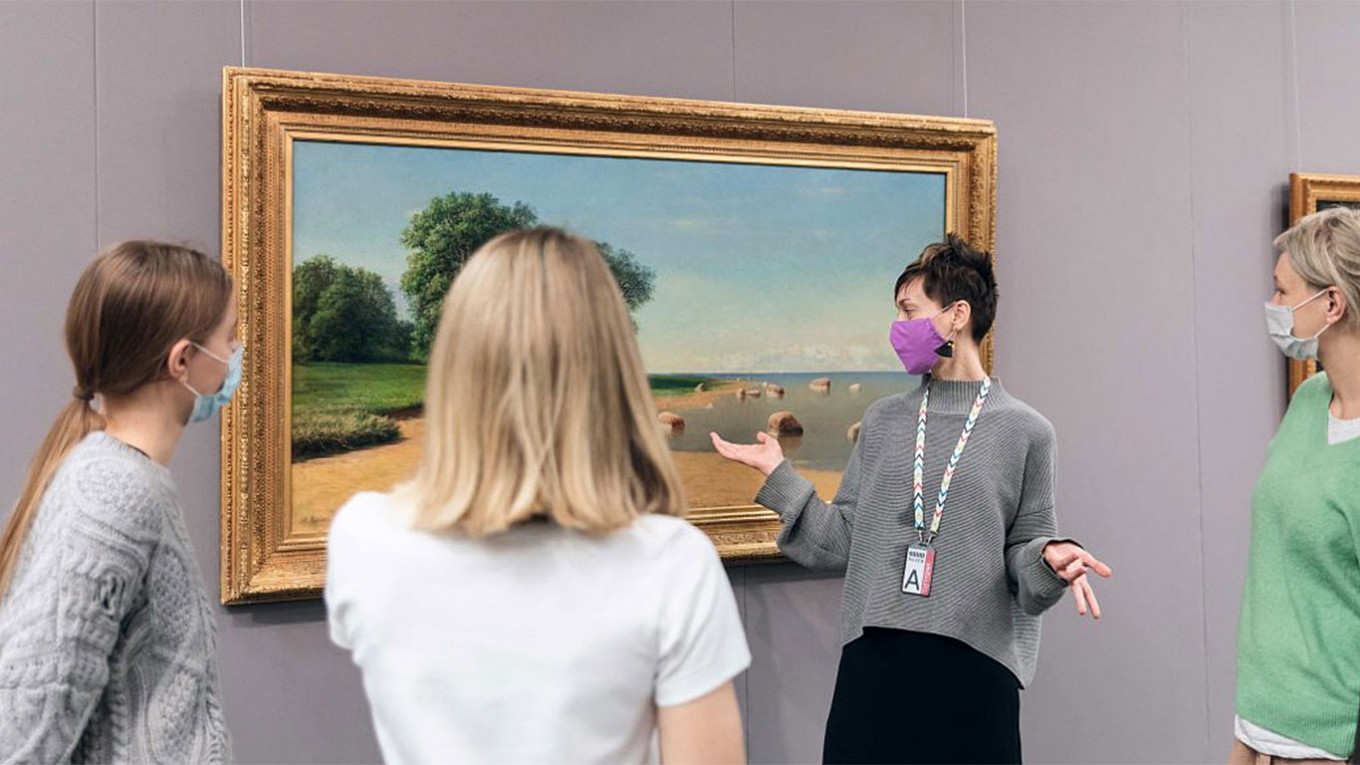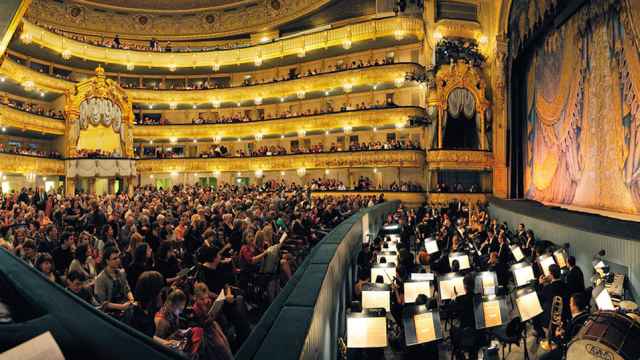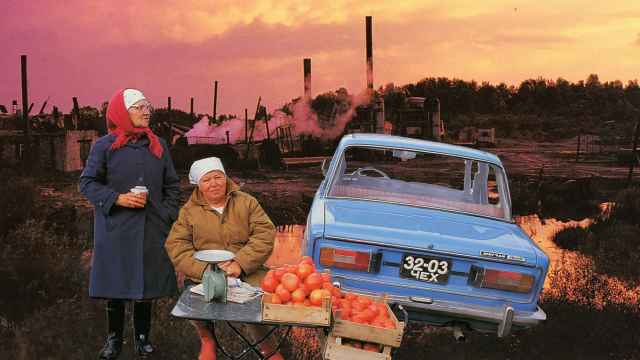Puffy clouds float under the ceiling of the Manege Exhibition Hall in St. Petersburg. Made of plywood and radiating naive playfulness, they seem to be coming straight out of an early 19th century theater production. You almost expect to hear the sounds of a thunderstorm made by banging a piece of iron and sending large stones rolling in a box.
The clouds welcome visitors of the venue’s new exhibition, Peace and Joy, that takes the audiences on a serene journey to all things idyllic, as depicted by the finest 19th century Russian painters.
This academic and rather formal display makes a striking contrast to the venue’s most recent offerings that focused on digital and cutting-edge art that confronted the ailments of Russian society. This time the curators have created an oasis of calm and peace, suggesting we devote some thoughts to the eternal joys that we often take for granted – nature, home, and loved ones.
The exhibition features works by over 100 Russian artists such as Vladimir Borovikovsky, Vasily Tropinin, Silvestr Shchedrin, Orest Kiprensky, Karl Bryullov, Ivan Shishkin, Arkhip Kuindzhi, Mikhail Nesterov and Viktor Borisov-Musatov. The artworks come from the collections of 39 leading museums and galleries in and outside Russia.
Curated by Semyon Mikhailovsky, the rector of the Russian Academy of Fine Arts, the display may give the impression that you are wandering through the academy’s halls. But there is an important difference.
"The Manege exhibition does not feature battles, heartbreaking dramas, fervent passions, heightened emotions, or frightening mysticism,” Mikhailovsky said. “Peace and Joy is an idyllic tale of art…Of course, we know that history that has seen a lot of tragedies, but we deliberately focus on a world of benevolence and peace. The artists seek and find harmony in colors, shapes and proportions, and in their serene subjects,” he said at the opening.
The display creates a kind of sacred territory of quiet and cozy domestic joys, Italian bel paese, the unspoiled beauty of forests, lakes and mountains — all of which conjure up romantic episodes from our own lives.

Many of the paintings tell very personal stories of the artists themselves. Nikolai Kuznetsov’s 1879 painting, “Resting on a Public Holiday,” shows a young woman in a folk embroidered gown laying on a meadow, apparently resting after work in the fields. Art historians believe the woman to be the artist’s future wife. Kuznetsov visited the family estate in Stepanovka quite often, and on one occasion he fell in love with a peasant girl. The family opposed the marriage, but after several years the artist married his beloved.
The display includes an unusual offering from the celebrated Russian 19th century artist Karl Bryullov, renowned for his romantic Italy-inspired masterpieces such as “The Last Day of Pompeii,” “Italian Midday,” “Italian Morning” and “Horsewoman.”
His 1849 work, “Nuns of the Convent of Sacro Cuore Singing to the Organ,” tells the story of the artist’s lesser known hobby. The painting shows a quartet of nuns singing at rehearsal with a small a portable organ. Bryullov was a keen organ player himself, and even took the instrument with himself during his travels.
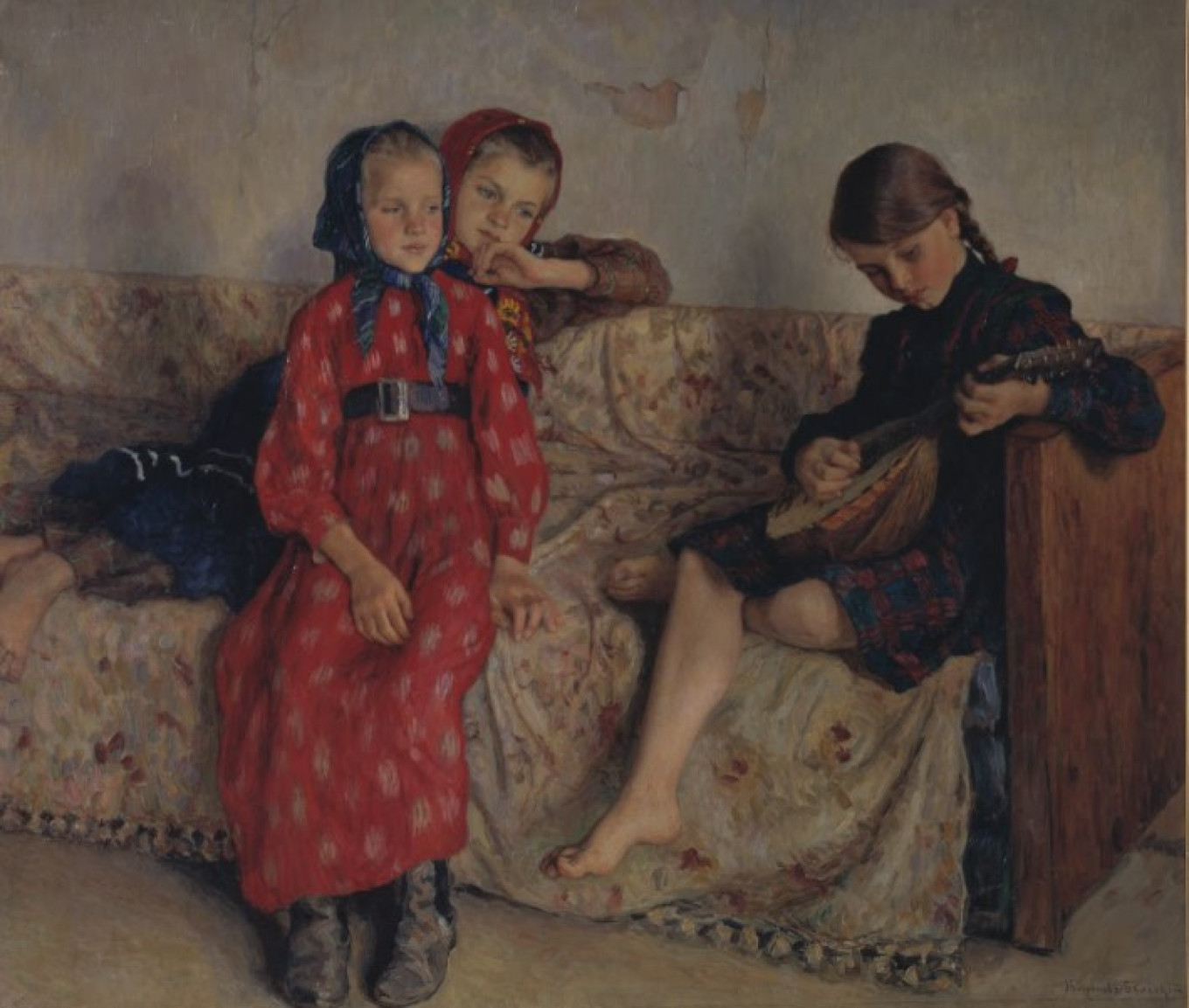
“This exhibition feels a bit like time travel,” Yekaterina Vasilieva, a visitor of the exhibition, told The Moscow Times. “I know many images from my childhood — there were some in my grandmother’s flat. It is a most comforting selection... exactly what many of us need in these turbulent and unpredictable times.”
In an effort to further enhance the idyllic atmosphere of the display, the organizers commissioned composer Anton Batagov to create the soundtrack for it. Batagov’s minimalist meditative work plays in the halls throughout the duration of the exhibition.
“When I was approached with this request, it only took me a moment to day yes,” Batagov told The Moscow Times. “It is a most unusual experience, different from composing a score for a film or a theater production. You get to speak to each and every painting, and you share your emotions through the music. It has been a most precious experience.”
Following in the footsteps of many 19th Russian century artists, Batagov chose Italy – and its influence on Russian art – as the main source of his inspiration.
“The Italian influence can be sensed both in painting and in music,” he said. “The divine bel canto melodies, picked up by Russian composers of the past, flourished on the Russian soil in a completely different way – not as imitation, but as a new sonic reality, full of their own magic and somewhat sad joy. In the soundtrack for the exhibition the Italian theme runs through the entire display.”
Even the exhibition’s interactive element has a nostalgic and romantic twist. Visitors can swing on one of the swings that hang straight from the clouds. The only request from the caretakers? Don’t swing too hard.
The exhibition will run until Jan. 30, 2022. For more information, please visit the site here.
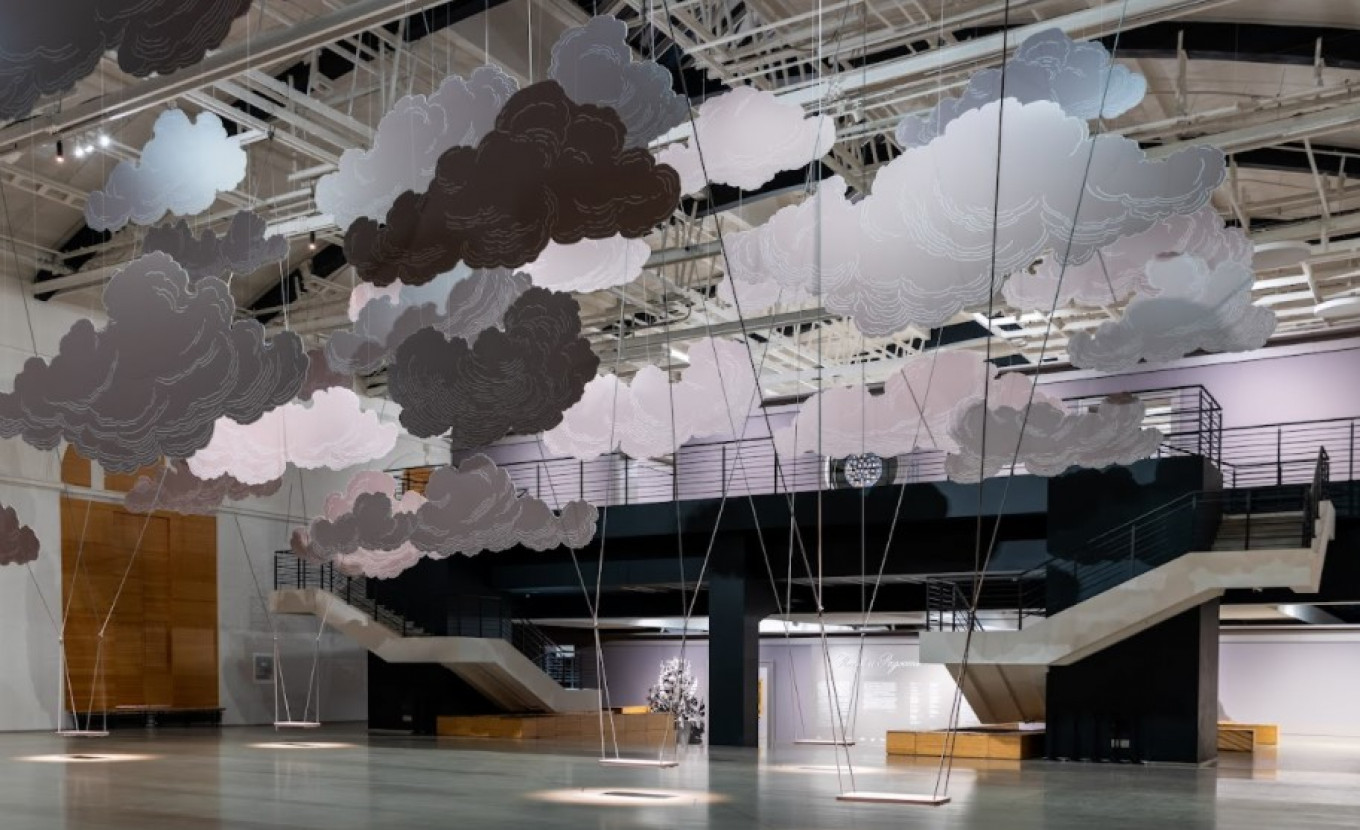
A Message from The Moscow Times:
Dear readers,
We are facing unprecedented challenges. Russia's Prosecutor General's Office has designated The Moscow Times as an "undesirable" organization, criminalizing our work and putting our staff at risk of prosecution. This follows our earlier unjust labeling as a "foreign agent."
These actions are direct attempts to silence independent journalism in Russia. The authorities claim our work "discredits the decisions of the Russian leadership." We see things differently: we strive to provide accurate, unbiased reporting on Russia.
We, the journalists of The Moscow Times, refuse to be silenced. But to continue our work, we need your help.
Your support, no matter how small, makes a world of difference. If you can, please support us monthly starting from just $2. It's quick to set up, and every contribution makes a significant impact.
By supporting The Moscow Times, you're defending open, independent journalism in the face of repression. Thank you for standing with us.
Remind me later.


